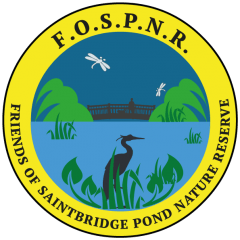Before continuing to the article, please watch the public information film from the River and Canal Trust about this growing problem.
Duck talk
Changing the way we feed the ducks.
It’s one of the most joyful things you can do with the kids on a Sunday afternoon – head down to the banks of your canal or river and feed the ducks out in the sunshine. There are concerns, however, that ducks are being fed too much bread in overcrowded hotspots, so the Canal & River Trust is launching a new campaign to try to redress the balance. Trust ecologist Chantal Dave tells us more.
What’s a natural diet for a duck?
Mallards, a common species of duck on the waterways, usually eat a varied diet of seeds, acorns, berries, plant matter, fish eggs, worms and snails.
So what should we be feeding the ducks?
Try seeds, corn and perhaps even defrosted frozen peas. One food I’ve noticed goes down well is porridge oats. Bird seed is another great option, too. And they don’t need a huge amount – just a small scattering will do.
How have ducks responded to these alternatives so far?
There has been some initial feedback saying the ducks aren’t taking to it so well as the bread but I think this is simply because they’re not used to it, especially if it’s a popular feeding site and they’re used to eating bread. My advice is – be persistent and keep trying with the healthier food. They’ll get used to it in time!
Why is bread bad for ducks, then?
Too much bread, particularly white bread, has been found to be unhealthy for humans, so how can we expect it to be good for ducks? It’s low in nutrients and can be very stodgy for wildfowl to deal with. Another issue is that any scraps of bread left uneaten in the water can quickly harbour bacteria, such as Clostridium botulinum, which can cause botulism in ducks if they happen to eat it. Uneaten scraps also attract vermin, such as rats.
And how can food affect the water?
Too much food thrown into a manmade body of water, such as a canal – which has a slow-moving flow – can cause a build-up of too many nutrients in the water and encourage algal growth. This algae, such as duckweed, starves the water of oxygen and blocks out sunlight, having a detrimental effect on the ecology of the canal. So as well as encouraging people to feed the ducks healthier alternatives to bread, we’re also recommending they avoid the overcrowded feeding hotspots. Instead, try taking your pouch of food a couple of miles up the towpath and spread the love a bit more.
Interview: Abigail Whyte (taken from the website)
Links https://canalrivertrust.org.uk/news-and-views/blogs/waterfront/duck-talk
WEILS DISEASE: & WILDFOWL FEEDING
I need to draw attention to this disease which has received recent publicity due to several complaints about the rat numbers around the reserve. Within the Current COVID Crisis, footfall around the pond has increased with the numbers exploring this great resource. However, there is a problem, with the increase in the grain and mainly bread left at the feeding sites (along with the litter), the rat pest population has increased and they have become more brazen.
In order, to stem the amount of bread and other material left on the bank, we will be installing the above sign to inform everyone of the dangers of leaving food on the bank.
These pests have been getting used to human contact, seeing ‘us’ as a food source over the past couple of months. Also, people have been getting them confused with ‘water rats’ or voles which is a completely different secretive species. The public confusion lies with Rat (better known as Ratty) as one of the four main characters in the 1908 book The Wind of the Willows. He is in fact, a water vole (referred to as a water rat in the book) who lives at a riverbank
Differences between the Rat and Vole

One distinct feature that sets water voles apart from brown rats is the ears.





